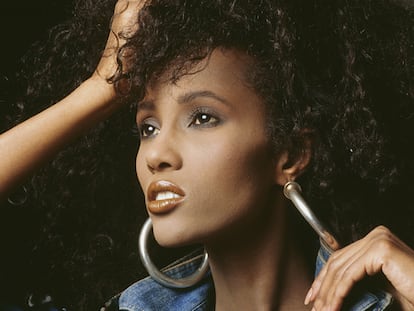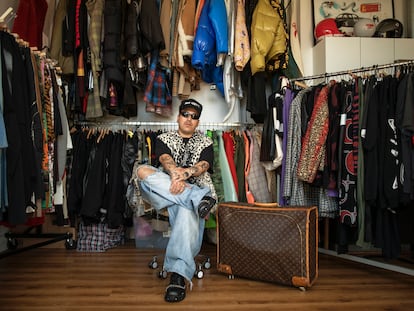The cultural history of piercing: From stigma to high fashion and everything in between
Piercing different body parts is an ancient practice in many cultures; in the West, the countercultural movements of the 1960s and 1970s also incorporated it. Today, piercings are widely accepted; any political significance they once had has been watered down, and their decorative function now reigns supreme
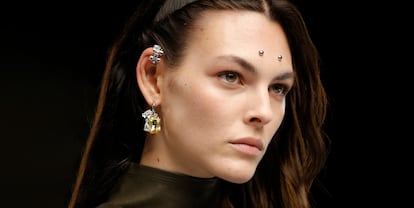
Today’s wide acceptance of piercing has eliminated any symbolism that it once had in Western cultures. Nowadays, the practice is growing strong, and there are endless options for body piercing. In some places, however, the practice retains its stigma. In North Korea, it is forbidden as a symbol of the capitalist lifestyle, much like skinny jeans. In Iran, body piercings are even punishable by imprisonment, as women who’ve been arrested by the so-called morality police can attest.
But in the West, we tend to see piercings as just another accessory, the success of which ebbs and flows as trends come and go. Piercings are currently making a comeback. Stylish women have been sporting nose and septum (between the nostrils) rings on the red carpet. A few weeks ago, model Gigi Hadid debuted a fake septum piercing at the CFDA awards. Last March, Katie Holmes was seen with a nose ring. Actress Florence Pugh almost always wears hers.
From a Western perspective, piercing might be regarded as a relatively new practice that was popularized decades ago by different urban groups. But it is actually a centuries-old cultural practice in some places. In ancient Egypt, it functioned as a status symbol. Among Eskimos in North America’s Arctic regions, piercing has served as a rite of passage into adulthood for several millennia. In Africa, piercing different parts of the body is a traditional and widespread practice among both men and women; it can symbolize a new stage of life or simply be a beautiful accessory. Just as it is common in
Western countries for baby girls to have their earlobes pierced at birth, it is customary to pierce female infants’ noses in some parts of India. The Indian bridal trousseau also includes a nose ring that connects to the hair with a chain as a decorative accessory (for instance, Indian actress Priyanka Chopra wore one at her 2018 wedding when she married Nick Jonas).
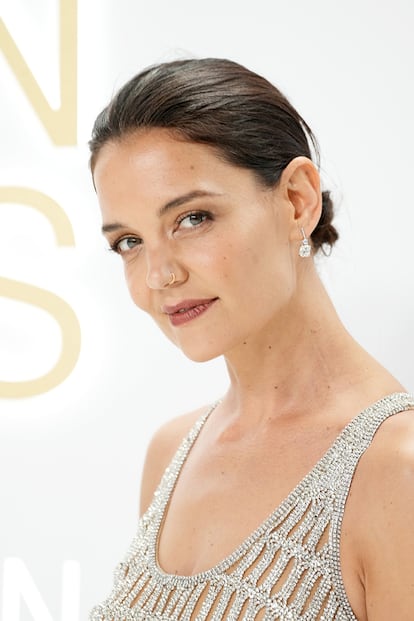
In the West, piercings were originally associated with irreverence and rebellion: it was the province of hippies in the 1960s, the punk movement of the 1970s and raver culture at the end of the millennium. The first piercing studio was founded in West Hollywood, California, in 1978 by Jim Ward, who some call the father of modern piercing. Over the years, piercing’s political aspect has been toned down, and today its decorative quality has eclipsed any symbolism. Because of piercing’s popularity, one no longer needs to find a specific studio to do it. Jewelry shops are increasingly exploiting this niche market, and many offer high-quality, in-store professional piercing services.
Fashion and music take on prejudices against piercing
As it has become a popular trend, piercing has overcome stigmas and prejudices. Piercer David Aznar of Aristocrazy, Spain’s first jewelry store to offer this service, says that “it’s certainly nothing like it was in 2009, when I started doing body piercings.” He notes that piercing “is an ancient practice that has developed into what it is today through the pioneers of modern piercing. It’s no longer a minority or even marginal practice; it’s often a very personal form of expression that completes the person who [wears it].”
In the early 1990s, top models like Christy Turlington and Naomi Campbell graced the catwalk with their discreet belly button piercings. Stella Tennant’s iconic septum ring inspired fashion-loving outsiders. Gradually, piercings began to appeal to a broader general public, and body adornment was no longer limited to specific subcultures.
At the start of the new millennium, pop icons played a major role in normalizing body piercings. Music stars—who could play with their appearance more freely than actors who must conform to the demands of a script—were particularly influential in driving the trend. International star Britney Spears’s belly-button ring inspired many teenage girls. Others yearned to emulate Christina Aguilera’s Dirrty-era nose ring. Still others preferred a tongue piercing like the Spice Girls’ Mel B, who showed hers off in the band’s photo shoots.
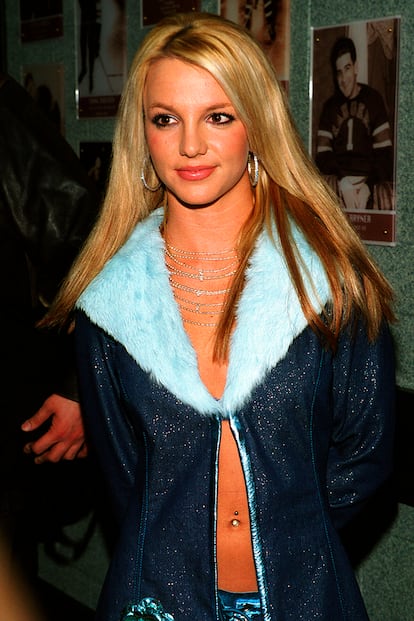
The vaunted Y2K aesthetic was not just defined by low-rise pants and slit dresses. Fashion icons like Paris Hilton and Lindsay Lohan made piercing an essential part of their wardrobes. During the Black Eyed Peas’ golden era, singer Fergie’s pierced eyebrow encouraged people to go beyond belly-button rings. In the early aughts, almost all body parts were fair game for piercing. “As a teenager, I succumbed to the piercing fever. In 2009, I convinced a friend to go with me to get the frenulum of my tongue pierced. It was not a good idea. The ball kept falling out, and it ended up getting infected. I stuck with the piercing for a while, but the area just kept getting more swollen. Eventually, I came to my senses and removed the piercing for good,” Blanca, 31, explains.
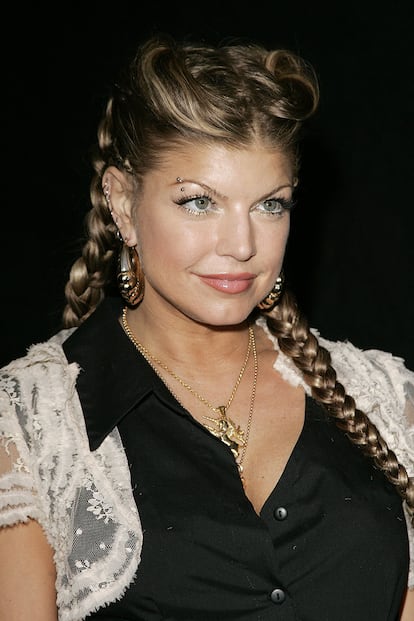
In the late 1990s and early 2000s, men began to embrace piercing as well. Male piercings were inspired by the pop-punk influence of bands like Blink 182, particularly the band’s drummer Travis Baker (the newest member of the Kardashian clan). Lenny Kravitz’s nose ring also influenced the trend (during the singer’s relationship with Lisa Bonet, the couple wore matching earrings). Slowly but surely, piercings have carved out their own space in fashion, and we tend to see them as a style trend that waxes and wanes like any other. Over the past few years, piercings have appeared frequently on the small screen. From Física o Química to Élite to Sex Education, piercing has become a cyclical trend on TV.
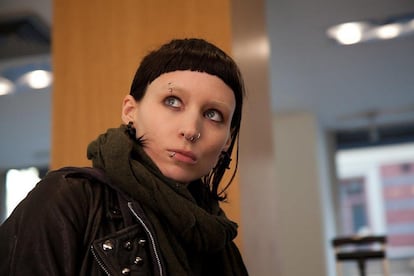
Is piercing making a comeback or has it never left?
After a down period, fashion is now embracing a multitude of piercings once again. In addition to the styles showcased on the red carpet, the catwalk is now featuring a variety of piercings for the fall/winter season. At Louis Vuitton, an extra-large septum piercing contrasted with shirt-and-tie styles. The most punk and transgressive version came in Givenchy’s fashion show, which employed piercings a la Rooney Mara’s character in The Girl with the Dragon Tattoo. There, bleached eyebrows (another current trend) accentuated the impact of the double forehead piercings that top models like Bella Hadid wore. The Balmain and Koché shows featured lower lip piercings in different sizes.
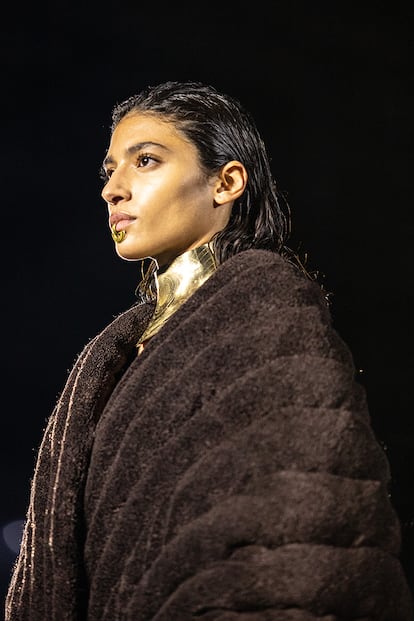
This is not the first time that piercing has taken center stage on the catwalk. In his spring 1994 collection, Les Tatouages, Jean Paul Gaultier gave a nod to piercing culture; his models, including Rossy de Palma, wore fake piercings. Last July, Olivier Rousteing presented Jean Paul Gaultier’s Haute Couture collection, which reimagined the styles from the 1994 show. Kim Kardashian and her daughter North West sat in the front row at the show, wearing matching outfits, complete with nose piercings.
The piercings du jour
Although nose piercings have made a comeback on the catwalk and the red carpet, according to piercer Andrea Shaka (@shakatheneedle on social media), different types of ear piercings are currently the most common request. She notes that “right now, ear piercings are the most requested type; doing designs tailored to each ear’s [unique] anatomy is the most fashionable trend, for women especially, but for men as well.” Shaka averages five appointments a day; some days she does over 20 piercings.
The earlobe and upper ear cartilage are the most common places for piercings, but there are nearly unlimited possibilities for decorating the ear. Ear piercing has a vast terminology that differentiates by where it is done: conch (in the area of the cartilage called the “shell,” in the center of the ear’s outer area), helix (the upper part of the ear, on the cartilage), flat (in the upper fold of the ear), tragus (the inner cartilage) and daith (located in the central cartilage). Recently, daith piercing has become popular because it is associated with protection from migraine headaches, although there is no scientific evidence to prove that.
Microdermal piercings stand out as a new trend, which first began around 2004. “In the jewelry world, microdermals are an avant-garde piercing…in which pieces of jewelry are inserted into the skin. The main motif is 18-karat gold and has a simple screw [or] smiley face design. All [microdermal piercings] have a titanium base, which is the only metal that our body won’t reject,” the Aristocrazy jewelry company explains. The temples or the outer part of the wrist are some of the most common locations for microdermals. In short, it represents another of the nearly endless array of piercing options.
Tu suscripción se está usando en otro dispositivo
¿Quieres añadir otro usuario a tu suscripción?
Si continúas leyendo en este dispositivo, no se podrá leer en el otro.
FlechaTu suscripción se está usando en otro dispositivo y solo puedes acceder a EL PAÍS desde un dispositivo a la vez.
Si quieres compartir tu cuenta, cambia tu suscripción a la modalidad Premium, así podrás añadir otro usuario. Cada uno accederá con su propia cuenta de email, lo que os permitirá personalizar vuestra experiencia en EL PAÍS.
¿Tienes una suscripción de empresa? Accede aquí para contratar más cuentas.
En el caso de no saber quién está usando tu cuenta, te recomendamos cambiar tu contraseña aquí.
Si decides continuar compartiendo tu cuenta, este mensaje se mostrará en tu dispositivo y en el de la otra persona que está usando tu cuenta de forma indefinida, afectando a tu experiencia de lectura. Puedes consultar aquí los términos y condiciones de la suscripción digital.
More information
Archived In
Últimas noticias
The metaverse, four years later: Is it finished or just at a standstill?
$3,000 and a plane ticket: The United States increases incentives for migrants to self-deport before the end of the year
Charles Dubouloz, mountaineering star, retires at 36 with a farewell tour inspired by Walter Bonatti
From the White House to diplomatic gifts: Lego wins over adult fans, brick by brick
Most viewed
- The low-cost creative revolution: How technology is making art accessible to everyone
- Christian Louboutin: ‘Young people don’t want to be like their parents. And if their parents wear sneakers, they’re going to look for something else’
- All the effects of gentrification in one corner of Mexico’s Colonia Roma
- Christmas loses its festive spirit: ICE fears cast shadow over religious celebrations
- Liset Menéndez de la Prida, neuroscientist: ‘It’s not normal to constantly seek pleasure; it’s important to be bored, to be calm’
